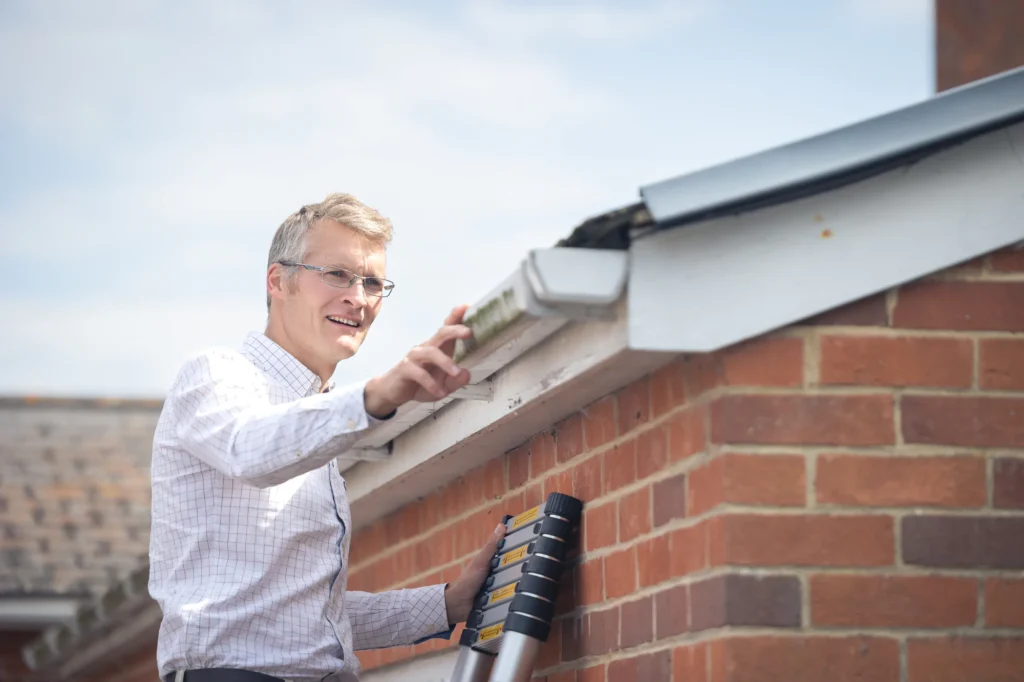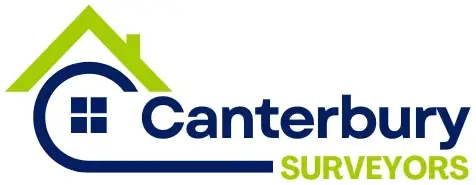RICS Building Surveys
- Home
- RICS Building Surveys
Property surveys carried out by RICS stand up well against any in the world. The best and only way to know the real physical condition of anything is to inspect it thoroughly, and that is exactly what an RICS survey does.
When you want to know what you are buying, an RICS building survey can ensure you do not buy a big liability. If you are buying a badly built or deteriorating property, the survey needs to pick up on this in order to help you determine what you would pay for it. Home do not maintain themselves!

Getting a Building Survey for a Property in Canterbury
When purchasing a property in Canterbury, it’s crucial to understand the purpose of a building survey and the reasons for having one conducted.
Quite literally, a house survey can save you from making a disastrous buying mistake, but it can also serve as a negotiating tactic to lower the purchase price.
If you’re selling a property, it’s prudent to get a survey done as well so that you’re not blindsided by any issues that might crop up during negotiations. Knowledge is power.
Finding Defects in Properties
If you’re worried about any part of your home’s structure or condition, a Specific Defect Survey can help you get to the bottom of it. You will find out whether the problem is serious or not, its cause (or likely causes, since there are often several), and what you will need to do to repair it, including necessary permits and the cost in time and money.
Canterbury Help to Buy Survey
If you’re thinking about using a Right to Buy scheme, or if you already have a Help to Buy shared equity loan, you’ll soon need an RICS Valuation. This independent valuation assesses the current market value of your property.
Full Building Survey Level 3
A Full Building Survey (Level 3) offers an in-depth evaluation of both the property’s structure and its overall condition. If there are any imminent repairs needed, your surveyor can make the estimates. However, you should be aware that those estimates are part of an additional service.
What you will get with a Full Building Survey is the detail necessary to understand fully what you are purchasing, whether it is a large, old, dilapidated or unusual property or one of such luxury that you hardly know where to begin.
Even if you plan to make an unusual number of changes to the property after purchase, a Full Building Survey can serve as an accurate baseline to work from.
HomeBuyer Survey (Level 2)
A HomeBuyer Survey Level 2 offers a visual inspection of parts of the property that are easily and safely accessible. The assessment looks for serious, obvious problems but does not focus on issues that might not be immediately apparent. If your property was built recently and uses conventional building materials and methods, the guidelines suggest that you opt for a HomeBuyer Survey Level 2.
Condition Report Surveys (Level 1)
Some surveying firms also offer Level 1 Condition Report Surveys. These assess the condition of the surveyed property and give a brief overview of its present state. Due to the brief nature of these reports, they are best suited for modern properties that have no apparent defects. It is best to go for a more in-depth survey if ever you are purchasing a property, no matter the type.
How do I arrange a Building Survey?
The building survey is usually arranged by the buyer. The buyer must choose not only the type of survey but also how to respond to the findings.
Best House Survey for your Canterbury Property
It’s your decision, but for the tranquillity that accompanies knowledge of your property, we recommend a Full Building Survey for all types of properties, regardless of their condition or age.
How do the Home Buyer Survey Level 2 and the Full Building Survey Level 3 differ?
The Home Buyer Report is RICS’s most widely utilised survey. It is a shorter, more concentrated document than the Level 2 Building Survey. However, it is much more concentrated and detailed than a Level 1 RICS Condition Report.
The Home Buyer Report is better suited to “run-of-the-mill,” conventional properties that are less than 100 years old, have straightforward construction, and should be in “good” or “fair” condition.
This is because the level of inspection is akin to that of the cursory walkthrough one would conduct before buying a used car. The Full Building Survey, however, is more “bespoke,” offering a greater level of inspection for a price that is marginally more than what one would pay for a Level Two report.
Level 3 v Level 2 Survey Comparison Guide
Your survey will be more than just a description of the condition of the property. It will include all the comprehensive, technical, and structural advice that you would expect from a true professional. Yet, the types of survey that exist and the quality standards associated with them vary drastically. Here, we’ll give a brief rundown of where the Full Building Survey and the Homebuyer Report stand on the spectrum.
Building Survey: Level 3
- The most popular choice for surveying most types of properties.
- Desktop searches on local area, conservation, etc.
- Full coverage of all of the report features found in Level 1 and Level 2 surveys.
- Conducted by a qualified and/or accredited surveyor.
- Accessible areas are inspected (basements, accessible roof spaces).
- Performance of services (gas, electric, heating, hot water) is checked.
- Descriptions of the materials used and the construction methods employed are given.
- Clear discussion of structural condition and all the detailed, important stuff regarding major defects and other damages are found here.
- Dampness testing is done (with the right tools).
- Repair recommendations
HomeBuyer Report: Level 2
- The Homebuyer Report at level 2 of the survey is a templated report with a traffic light system for only visible defects.
- It describes issues that are readily accessible and allows the reader to understand the significant problems that affect the value of the property.
- Repairs and maintenance that are necessary to make the home liveable are mentioned but not thoroughly discussed.
- It does give an overall valuation of the property and what needs to be done to make it worth the price listed.
What is the process for carrying out Full Building Surveys and HomeBuyer Surveys?
The Royal Institution of Chartered Surveyors, more commonly known as RICS, helps everyone involved in property transactions understand what’s going to happen at the point of purchase when surveys are carried out.
They do this by clearly describing the different levels of surveys that can be obtained and by setting them against a backdrop of increasing detail, which also accompanies an increase in the level of judgment and decision-making that the surveyor has to do.
What is an RICS Building Survey?
In a Level 3 Building Survey, the surveyor goes beyond basic inspection to assess the condition of a building. They look closely at areas that are often overlooked, and they do this in the context of the structure as a whole, along with its history and the kinds of things that have happened to it—and in some cases, might happen to it in the future. Here are some examples of how in-depth it is by comparison:
Level 3 Building Survey
Roofspace: the surveyor enters the roof space. They examine any and all spaces that are close to the roof and where they can stick a camera or their head into. They might lift some insulation, or move it around where it is not too awkward, to try to see the underside of the roof, assess the condition of the roof framing, and get a sense of the overall kind of insulation/energy issues that the ceiling, roof, and roof space might present to the building (and the occupants).
Windows: small decor and curtains will be shifted, enabling an expert to check how well all of the windows function, testing their operability.
Floors: during an inspection, loose carpets and floor coverings may be moved to inspect the floors and whether their levelness is correct. If possible, cameras are used to inspect the space under the house.
Level 2 Building Survey
Roofspace: the loft space will be inspected by head-and-shoulder, but not entered and nothing will be moved.
Windows: these will not be inspected if there are heavy curtains or personal items in the way. Each window will otherwise be checked to make sure it opens and closes.
Floors: if not covered, the floor will be inspected. The surveyor will not move furniture, lift carpets or other coverings.




